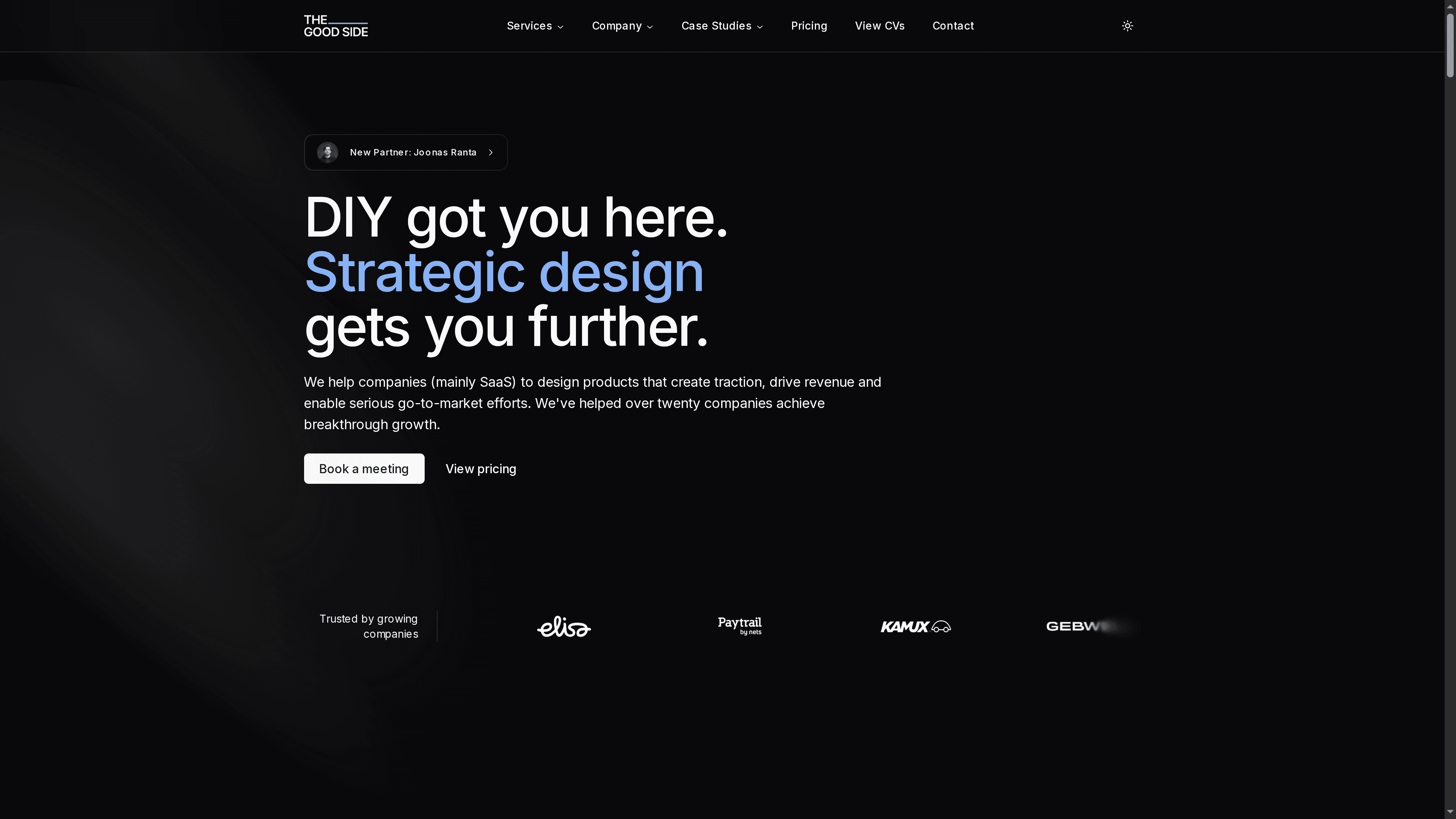Complete Guide to the Role of UX in SaaS
Explore the critical role of UX in SaaS, from user journey optimization to conversion strategies and business impact, in this comprehensive guide.

Did you know that strong user experience can cut SaaS churn rates by up to 50 percent? UX shapes every moment a customer spends with a product and often decides whether they become loyal advocates or leave for something simpler. Good design is no longer just about looks, it’s the engine behind retention, satisfaction, and real business growth for SaaS companies.
Table of Contents
- Defining UX and Its Importance in SaaS
- Key UX Components for SaaS Products
- How UX Drives User Activation and Retention
- UX’s Impact on Conversions and Revenue Growth
- Common UX Challenges in SaaS and How to Solve Them
Key Takeaways
| Point | Details |
|---|---|
| Importance of UX in SaaS | User Experience (UX) is critical for customer satisfaction and retention, directly impacting churn rates and loyalty. |
| Key UX Components | Essential components for SaaS include intuitive navigation, secure authentication, and seamless onboarding to enhance user engagement. |
| Driving Activation and Retention | Effective UX strategies like simplified onboarding and personalized experiences promote user activation and long-term retention. |
| Impact on Conversions | Prioritizing UX can significantly boost conversion rates and, consequently, revenue growth, making it a key business strategy. |
Defining UX and Its Importance in SaaS
User Experience (UX) represents the comprehensive journey a user undergoes while interacting with a software product. Wikipedia defines UX as encompassing “a user’s perceptions and responses resulting from the use or anticipated use of a product, system, or service.” In the context of SaaS, UX goes far beyond aesthetic design - it’s about creating intuitive, seamless interactions that solve real user problems.
For SaaS companies, UX is not just a design preference but a critical business strategy. Gripped highlights that UX directly influences user satisfaction and retention, with a well-designed experience reducing churn rates and enhancing customer loyalty. This means the difference between a product users tolerate and one they genuinely love.
Effective SaaS UX focuses on several key principles:
- Intuitive Navigation: Users should understand how to use the product immediately
- Clear Value Proposition: Every feature must solve a specific user problem
- Minimal Friction: Reducing steps required to complete tasks
- Consistent Design: Maintaining visual and interaction coherence across the product
The ultimate goal of UX in SaaS is transforming complex software functionality into simple, engaging experiences that users can effortlessly understand and appreciate. By prioritizing user needs and expectations, companies can create products that not only meet functional requirements but also deliver genuine delight and utility.
For a deeper understanding of crafting exceptional user experiences, check out our guide on the UI/UX process for SaaS success.
Key UX Components for SaaS Products
SaaS product design requires a strategic approach to user experience that goes beyond simple aesthetics. CreateUI outlines essential UX components that form the backbone of successful software-as-a-service products, including robust user authentication, flexible cloud infrastructure, and advanced analytics.
According to We Are Tenet, effective SaaS UX design hinges on creating experiences with minimal setup time, clean interfaces, and powerful collaboration features. These components are not just design elements but critical strategies for driving user engagement and satisfaction.
Key UX components for SaaS products include:
Here’s a summary comparing key UX components for SaaS products:
| UX Component | Main Purpose | User Benefit |
|---|---|---|
| User Authentication | Secure, seamless login | Safe access, quick entry |
| Intuitive Dashboard | Visualize key metrics, clean UI | Clarity, easy tracking |
| Onboarding Flow | Introduce features smoothly | Faster adoption, less confusion |
| Customization Options | Personalize experience | Fits user needs, higher satisfaction |
| Performance Optimization | Ensure fast, responsive actions | Smoother interactions |
| Collaborative Tools | Enable team communication/sharing | Better teamwork, efficiency |
- User Authentication: Secure and seamless login processes
- Intuitive Dashboard: Clean, informative interface showing key metrics
- Onboarding Flow: Smooth introduction to product features
- Customization Options: Ability to personalize user experience
- Performance Optimization: Fast, responsive interactions
- Collaborative Tools: Seamless team communication and sharing
Implementing these components requires a holistic approach that prioritizes user needs and reduces friction. By focusing on creating an intuitive, efficient, and enjoyable experience, SaaS products can differentiate themselves in a competitive market.

For deeper insights into crafting exceptional user experiences, explore our guide to UI’s role in SaaS conversion.
How UX Drives User Activation and Retention
User activation and retention are critical metrics for SaaS success, and user experience plays a pivotal role in achieving these goals. LinkedIn highlights that a smooth, intuitive UX directly reduces churn by ensuring users can easily navigate and derive value from the product, ultimately enhancing customer satisfaction and loyalty.
NASSCOM Community emphasizes that a well-designed user experience is crucial for engaging users in the competitive SaaS market. The right UX can transform first-time users into long-term customers by creating an effortless and enjoyable interaction with the product.
Key strategies for driving activation and retention through UX include:
- Onboarding Optimization: Create a clear, guided initial experience
- Intuitive Interface Design: Reduce learning curve and cognitive load
- Personalization: Tailor experiences to individual user needs
- Continuous Value Demonstration: Show ongoing product benefits
- Frictionless Workflows: Minimize steps to complete tasks
- Responsive Support: Integrate easy-to-access help and resources
Successful SaaS products understand that activation is just the beginning. The real challenge lies in creating a user experience so compelling that customers not only stay but become passionate advocates for the product.
To dive deeper into crafting conversion-driven user experiences, explore our guide to UI’s role in SaaS conversion.
UX’s Impact on Conversions and Revenue Growth
Conversion optimization is the lifeblood of SaaS growth, and user experience sits at the heart of this critical business strategy. UITop reveals that implementing best practices in UX design can dramatically increase conversion rates, potentially boosting trial-to-paid plan conversions by 20–25%, directly translating to substantial revenue growth.
Micra Solution underscores the financial impact, reporting that companies prioritizing UX design have seen a remarkable 37% increase in customer satisfaction. This satisfaction isn’t just a feel-good metric - it directly correlates with higher conversion rates and sustained revenue expansion.
Key UX strategies that drive conversions include:
- Simplified Onboarding: Reduce friction in initial user experience
- Clear Value Proposition: Communicate benefits immediately
- Intuitive Navigation: Make product usage effortless
- Responsive Design: Ensure seamless experience across devices
- Social Proof Integration: Display testimonials and success stories
- Strategic Call-to-Action Placement: Guide users toward conversion points
Successful SaaS products understand that UX is not just about aesthetics, but about creating a seamless journey that transforms curious visitors into committed customers. Every interaction is an opportunity to demonstrate value and build trust.

To explore more about optimizing your product’s conversion potential, check out our guide to UI’s role in SaaS conversion.
Common UX Challenges in SaaS and How to Solve Them
SaaS user experience is fraught with complex challenges that can make or break product adoption. LinkedIn highlights that common UX obstacles include complex onboarding processes and unintuitive interfaces, which can be effectively addressed by applying design thinking and deeply empathizing with user needs.
We Are Tenet emphasizes that SaaS products frequently struggle with steep learning curves and low user engagement. These challenges demand strategic interventions that transform complicated experiences into intuitive, user-friendly journeys.
Key strategies for overcoming SaaS UX challenges include:
- Simplified Onboarding: Create step-by-step guided experiences
- Progressive Disclosure: Introduce features gradually
- Contextual Help: Provide inline guidance and tooltips
- User Journey Mapping: Understand and optimize user interactions
- Personalization: Adapt interfaces to individual user preferences
- Performance Optimization: Ensure fast, responsive interactions
Successful SaaS products recognize that UX challenges are opportunities for innovation. By continuously listening to user feedback and iterating design, companies can transform potential friction points into moments of delight and engagement.
For a comprehensive look at crafting exceptional user experiences, explore our guide to the UI/UX process for SaaS product success.
Transform Your SaaS UX into a Growth Engine
Struggling with disconnected user journeys, complex onboarding, or unclear product positioning as highlighted in our Complete Guide to the Role of UX in SaaS? These common challenges can block your activation, retention, and revenue goals. At The Good Side Oy, we specialize in turning these pain points into cohesive, intuitive experiences that delight users and drive measurable growth. Our team of senior SaaS-focused designers provides tailored UI/UX design, user research, and end-to-end journey optimization to ensure your product not only meets user expectations but exceeds them.

Don’t let your SaaS product suffer from friction or low engagement. Take advantage of our streamlined process starting with a free design audit. Visit The Good Side now to see how we integrate strategic design and hands-on collaboration to accelerate your go-to-market success. Discover the difference expert UX design can make to your conversion and retention metrics by exploring our insights on strategic positioning and connecting with the exact SaaS design talent your product needs.
Frequently Asked Questions
What is UX in the context of SaaS?
User Experience (UX) in SaaS refers to the overall journey a user has while interacting with a software product, encompassing their perceptions and responses to the product’s design, functionality, and usability.
Why is UX important for SaaS companies?
UX is critical for SaaS companies because it directly influences user satisfaction, retention rates, and ultimately, customer loyalty. A well-designed user experience can transform a product from one users merely tolerate into one they genuinely love.
What are key components of effective UX design for SaaS products?
Key components of effective UX design for SaaS products include intuitive navigation, a clear value proposition, minimal friction in user interactions, consistent design, user authentication, and onboarding flows that help users adopt the product smoothly.
How does UX impact user activation and retention in SaaS?
A smooth and intuitive UX reduces churn by helping users easily navigate the product and derive value from it. Effective UX strategies—such as personalized experiences, simplified onboarding, and ongoing value demonstration—contribute to turning first-time users into long-term customers.